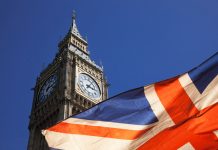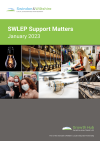South Korea have been tracing their infection sources since January: How will the UK implement an Asian COVID strategy as the death toll reaches 40,000?
Today (23 April), it has been a month since total lockdown began for the UK.
Also today, Chris Smyth (The Times) broke the news that the UK is planning to implement intensive tracking and tracing of COVID-19 within the next three weeks. In the effort to make this infrastructure a reality, 15,000 individuals will be trained to trace COVID-19 cases, so those individuals can be tracked down, tested and contained. This will give the government greater control over the containment of the virus and is the first step to answering the question of when lockdown measures will be lifted.
The 40,000+ deaths versus South Korea’s 240
The Financial Times calculated that there have been 41,000 deaths. They examined ONS data in the week ending 10 April, which was 75% above a normal level in England and Wales. This number is nearly double the official figure of only hospital deaths being released by the UK Government. However shocking the figure, it aligns with the predictions made by Imperial College London (ICL) researchers, whose report outlined the potential for 50,000 deaths if social distancing measures were not implemented early on as the UK prepared for COVID, 500,000 if there were no effective public health measures. ICL further explained that “suppression policies are best triggered early in the epidemic”, with 200 ICU cases per week being the last moment at which policies could be implemented and still work to keep ICU demand below what is available.
The UK Government continue to state that they are aiming to keep deaths below 20,000. At the time of writing, we have 18,100 hospital deaths due to the virus, so this ambition seems to be increasingly implausible. Testing for NHS workers has been a huge focus of the population, with a secondary focus on the lack of PPE available to them. This absence of resources is tied up with procurement failures but again suggests that the UK was slow to act decisively in comparison to neighbouring regions.
In a hugely different story, Hong Kong have four deaths for a population of 7.5 million. In South Korea, there are 240 deaths for a population of 51.64 million. Is it too late for the UK to learn from countries which have built their infrastructures after hard-won lessons from SARS?
How did South Korea flatten the curve?
South Korea flattened their curve in 20 days.
People are beginning to go out for dinner, to cafes, and to malls. The country was already mass testing by the time the WHO released a plea to all countries to prioritise testing their population. They then isolated any individual who had tested positive for 14 days, including tracing who they had contact within the run-up to their visible symptoms and isolating all of those individuals. This is not dissimilar to Hong Kong, who quarantined anybody in contact with a COVID-positive person two days before their symptoms began and strictly isolated anybody entering the country. In addition, South Korea used their technology to allow people to self-describe their movements and used GPS tracking, CCTV and credit card information to create paths of infection which were then issued as alerts to the public.
The methods used in Hong Kong and the wider Asian continent have been the subject of obsession by world leaders. Germany implemented an Asian COVID strategy and currently remains the most stable EU country.
Some UK officials have publicly denied the need to follow WHO advice to countries, which vehemently encouraged testing and tracing a high priority. Jack Blanchard from Politico, reminded us this morning of when Jenny Harries, Deputy Chief Medical Officer, Public Health England denied the need to ‘trace and test’ in the UK:
“South Korea was a very particular example, in a way. In the sense that it had a very significant outbreak in two locations. And in fact, the way that it deals with that has been the same that we would deal, for example, with an outbreak in a care home … It was a very unusual event.”
As recently as March, the Government was united in the assertion that the UK strategy of delayed lockdown was the right one for this country.
Testing capacity of the UK: Ready?
Currently, Secretary of State for Health Matt Hancock continues to promise that the UK will be able to test at 100,000 people per day by the beginning of May. In the first PMQs since the lockdown began, new Labour leader Keir Starmer asked Hancock how this figure will be possible when the current testing capacity is around 10,000 since 1 April. It turns out that the UK currently has the capacity to test around 30,000, according to Hancock’s count for 22 April. The level of testing necessary to make the Asian COVID strategy a working reality is available, which puts the onus on the 15,000 tracers who will be tasked with pinpointing where these tests will be necessary. The tech they will use could be similar to the way that WHO Africa has been tracing grassroots cases of Polio, via mobile apps that enable a highly precise count for even rural regions. Whichever technology we proceed with, the UK plans to be ready with this new system by 7 May.
This gives the chosen 15,000 a two-week window to get to grips with the infrastructure of an Asian COVID strategy. Can all of this work to flatten the curve and soften lockdown measures? In a report by Imperial College London advising the Government on their lockdown strategy, they said:
“We emphasise that is not at all certain that suppression will succeed long term; no public health intervention with such disruptive effects on society has been previously attempted for such a long duration of time.
“How populations and societies will respond remains unclear.”
Vaccines are still 12-18 months away from reality. But if this new system works, post-lockdown freedom for the UK will become a tangible object for policy-makers.
Editor's Recommended Articles
-
Must Read >> The science behind the Hong Kong COVID-19 strategy





























